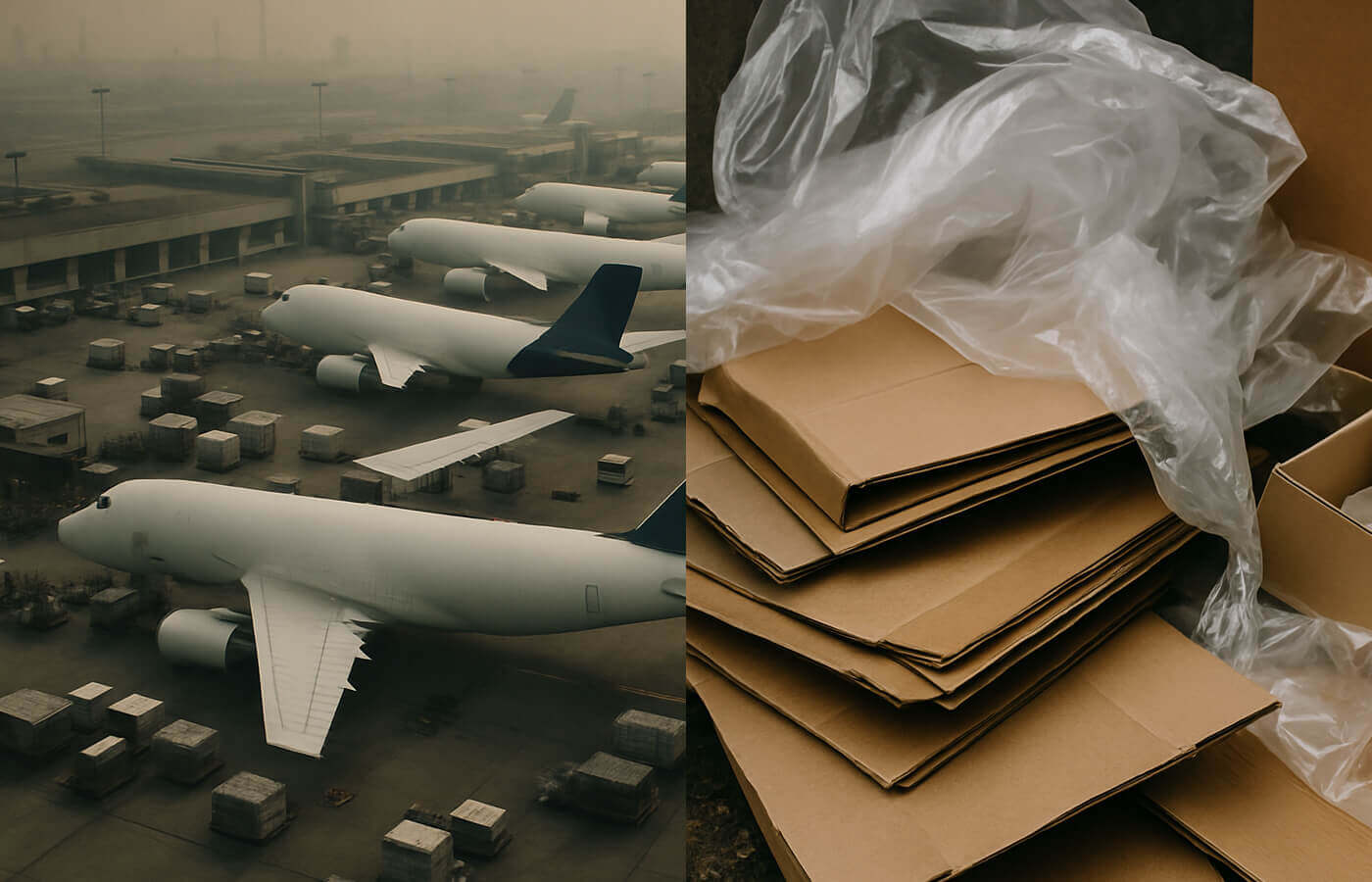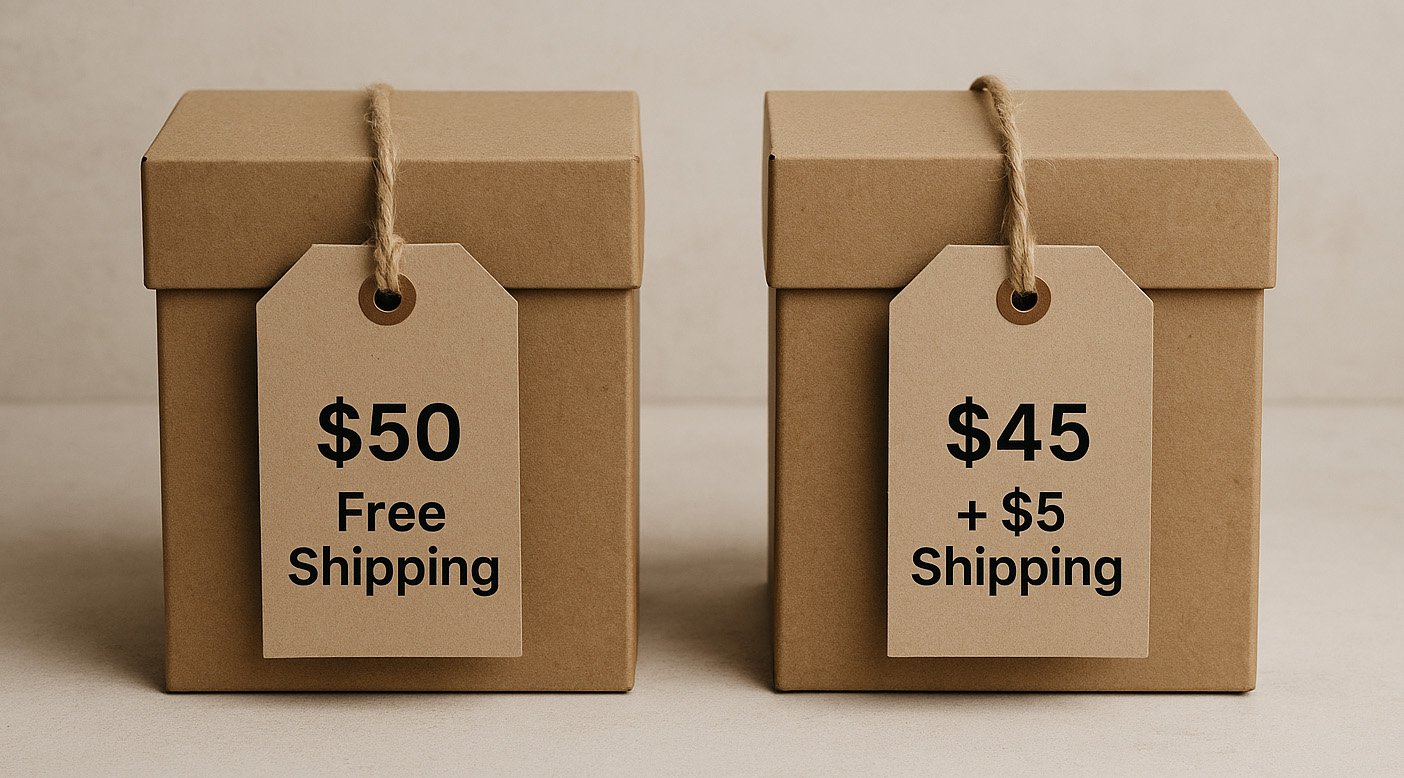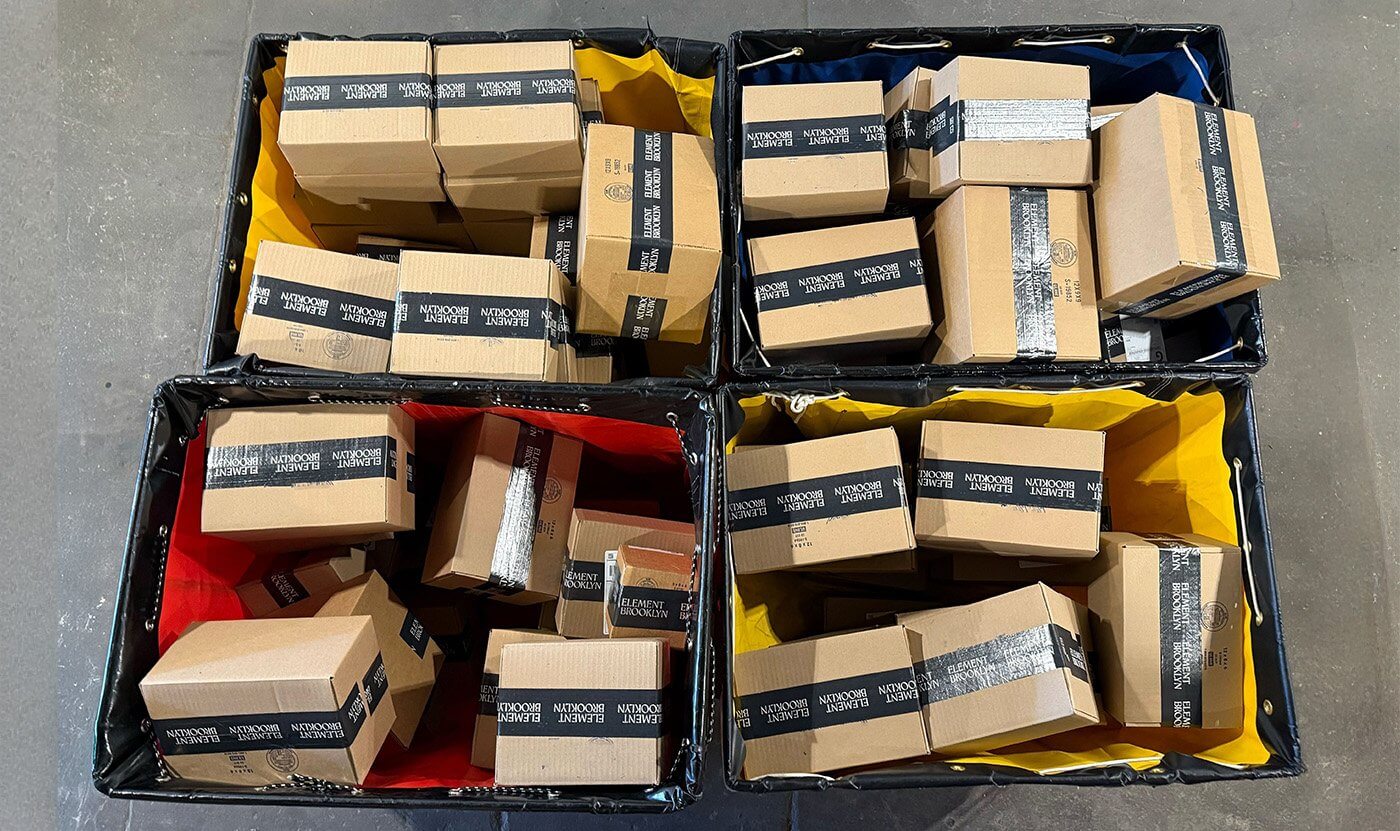We’re often asked by our customers why we don’t offer free shipping on every order. The answer is that shipping and order fulfillment isn’t free: it routinely costs us more than double the $5.90 that we charge. Pretending that it’s free only hurts small businesses, encourages wasteful habits, and hides the real costs behind convenience.
In this post, we’ll explain how free shipping is subsidized, how Amazon set unrealistic delivery expectations through monopolistic scale, and what the environmental consequences are when we prioritize speed and “free” delivery over everything else.
The burden on small business
Every online order costs money to fulfill, not only in the form of postage but also product storage, packing material, and labor. At Element Brooklyn, we charge a flat $5.90 for standard shipping. The cost of a shipping label alone is often more, even when we use the least expensive available shipping method (such as USPS Ground Advantage or UPS Ground Saver). When we include all the other expenses, our average per order fulfillment cost is around $11.
 Our team members working on order fulfillment do much more than just pick and pack orders.
Our team members working on order fulfillment do much more than just pick and pack orders.A significant component of this cost is labor expense. Someone on our team must not only pick and pack each order, but also coordinate pickups with carriers, load up carts and wheel them to the loading bay, order supplies (we use eight different box sizes), and perform countless other tasks necessary to stay efficient and organized in what can easily become a chaotic environment.
To keep things simple, many ecommerce companies use third party logistics companies, or 3PLs, to fulfill their orders. We partner with ShipBob in Australia and Bigblue in the UK as we don’t have our own fulfillment teams on the ground in those countries. (We also use ShipBob in the US for overload capacity during periods of high demand.) But 3PLs are also expensive, and their pricing structures are designed to win the business of very large companies doing huge volumes.
If order fulfillment costs us $11, why don’t we charge $11 for shipping? The reality is that everyone hates paying for shipping. In one survey, shipping charges were the number one reason shoppers gave up on a purchase. Shoppers have been conditioned to expect cheap or free delivery, so small brands feel pressured to keep shipping visibly low, even if it means taking a loss on it.
How we got here: Amazon
The reason that consumers expect fast, free shipping on almost everything is because Amazon has successfully transformed it from a rare perk into an industry standard. It has spent billions on building warehouses, buying fleets of trucks and planes, and subsidizing shipping costs to hook shoppers on the Amazon Prime promise.
 Amazon's scale and highly sophisticated distribution network is unmatched
Amazon's scale and highly sophisticated distribution network is unmatched Prime, which now costs $139 per year, cleverly hides shipping costs by charging an upfront membership fee and then advertising “FREE 2-Day Shipping” on millions of items. Amazon can also afford to lose money on shipping in the short term because it makes up for it with volume, data, and other profitable segments of its empire (like AWS and advertising). This is a monopoly at work: using deep pockets and massive scale to undercut everyone else until customers come to expect the impossible.
Speed is another expectation that Amazon has reset. Its promise of two-, one- and even same-day shipping, which Amazon’s competitors like Walmart and Target have been forced to mimic, has made consumers think any online order can and should arrive almost immediately. Amazon has normalized the idea that not offering free, instant shipping is bad service, even if, historically, paying a few bucks for delivery or waiting a week was perfectly normal.
The environmental toll of “fast & free”
Fast shipping of a large number of small packages doesn’t just cost money – it also costs the planet. It means more air freight, which produces up to 80x more emissions than ground or sea transport. It means more single-item orders that can’t be bundled efficiently: one study highlighted that in the worst-case scenario of one delivery per trip, the carbon emissions for that package could be up to 35× greater than if deliveries were grouped together on a full route. “Fast and free” means half-empty vans, more fuel burned, and higher emissions per package.
 When customers aren't directly charged for shipping, their packages are more likely to travel by air and to generate extra unnecessary waste.
When customers aren't directly charged for shipping, their packages are more likely to travel by air and to generate extra unnecessary waste.Packaging waste is another issue. Online shopping generates nearly 5x more packaging waste than traditional retail, especially when each item ships separately. Even if some of it is recyclable (much of Amazon’s is not), the volume is overwhelming and recycling is an expensive and inefficient process.
Returns also spike under free shipping models. When delivery and returns are both free, people over-order and send back what they don’t want. Returned goods often get discarded instead of resold, adding to emissions and waste. It has been estimated that U.S. returns produce 16 million metric tons of CO₂ per year.
It’s not really “free”
People love “free” shipping so much that they’re now willing to pay a higher total price for an item if the shipping is included. Studies show that customers prefer a $50 item with free shipping over a $45 item plus $5 shipping, even though the total is the same. Many companies exploit this by inflating prices. This often means paying more overall, especially if you buy multiple items (each item’s price has padding for shipping).
 The total's the same, but customers prefer the option with free shipping. One looks like a deal, the other feels like a fee.
The total's the same, but customers prefer the option with free shipping. One looks like a deal, the other feels like a fee. Another way the cost is hidden is through membership fees or loyalty programs. It doesn’t feel like a shipping fee when you order on Amazon Prime, but collectively those membership dollars fund the logistics. Other retailers have their own membership programs or simply treat shipping as a marketing expense, essentially using profits from product sales (or venture capital funding in the case of startups) to cover the shipping loss. But it’s important to realize that you are paying for shipping, one way or another. Either it’s baked into what you pay for the product, or it’s financed by your loyalty program fees, or it’s subsidized by investor money.
Free above $50: our compromise
At Element Brooklyn, we offer free shipping on orders over $50 (£50 in the UK and AU$50 in Australia). This is not because shipping suddenly becomes free at that number, but because it’s a practical compromise in a world shaped by Amazon.
We’d honestly prefer to charge shipping on every order to reflect the true cost of fulfillment. But we would be shooting ourselves in the foot. A threshold helps us meet customers halfway: it encourages bundling items into fewer shipments (which is better for the environment) and gives us a little more margin to partially offset shipping costs. It’s not perfect, but it’s the best balance we’ve found between staying sustainable and staying competitive.
Rethinking fairness in shipping and fulfillment
What’s fair when it comes to shipping? For small businesses, charging a modest shipping fee isn’t a money grab – it’s a reflection of real costs like labor, materials, and fuel. Free two-day delivery isn’t always necessary, and slowing down or bundling orders can make a big difference for both sustainability and efficiency. Supporting brands that use low-waste packaging or offset carbon emissions also helps push the industry in a better direction. Paying a little more for shipping means funding practices that are better for people and the planet.
So the next time you see a shipping charge, instead of immediately feeling annoyed and abandoning your purchase, consider tipping your cap to it. It represents reality. And in a world of so many illusions in retail, reality is refreshing.



